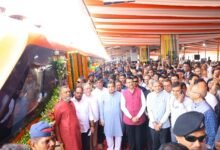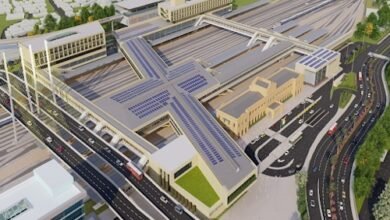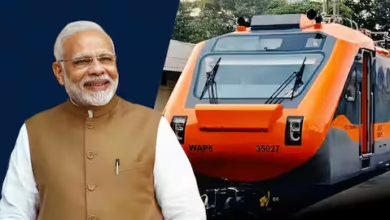PM Modi launches massive Rs 1,22 Lakh crore projects in Rajasthan; Flags off 3 trains including 2 new Vande Bharat
PM Modi virtually flagged off two new Vande Bharat Express trains – Bikaner–Delhi Cantt. and Jodhpur–Delhi Cantt. and one Amrit Bharat express train between Udaipur City to Chandigarh Express from Banswara, Rajasthan.
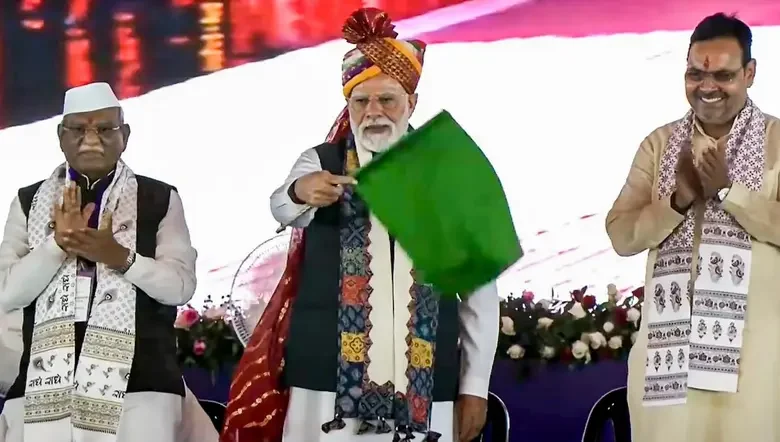
PM Modi launches massive Rs 1,22 Lakh crore projects in Rajasthan; Flags off 3 trains including 2 new Vande Bharat
ABHISHEK BYAHUT
BANSWARA/JODHPUR
In order to strengthen rail connectivity and boost tourism in Rajsthan, Haryana and Delhi, Prime Minister Narendra Modi on Thursday virtually flagged off two new Vande Bharat Express trains – one from Bikaner to Delhi Cantt. and another from Jodhpur to Delhi Cantt, along with an Amrit Bharat Express train between Udaipur City and Chandigarh from a rally in Banswara, Rajasthan.
Rajasthan had a historic day also as PM Modi also inaugurated and laid the foundation stone of significant development work, including nuclear power project, worth Rs 1.22 lakh crore, aimed at enhancing infrastructure push in Rajasthan.
Ashwini Vaishnaw, Union Minister of Railways and BJP MP from Jodhpur Union Culture Minister Gajendra Singh Shekhawat joined the event from Jodhpur railway station.
Speaking to a public rally, the Prime Minister said the nation is progressing at the rate of electricity. The Prime Minister remembered how in the past, electricity was expensive and limited, but now it is reaching every household and village. Biting at the opposition, he said attempts have always been made to hinder the speed of growth, but the central government has been working persistently to give strength to the poor and rural communities. He also requested people to embrace indigenous products, saying they were the real power of Atmanirbhar Bharat.
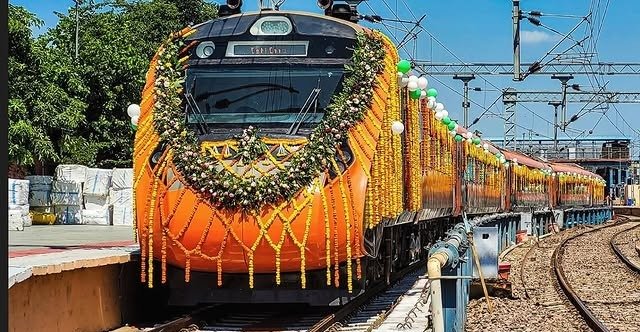
The introduction of the two new Vande Bharat Express trains has brought a wave of joy among people in Rajasthan and other neighbouring states.
The Jodhpur–Delhi Cantt. train will leave at 5:25 in the morning and arrive at Delhi Cantt. at 1:30 in the afternoon, while the return journey begins at 3:10 in the afternoon and ends in Jodhpur at 11:20 at night. Its primary halts are Merta Road, Degana, Makrana, Phulera, Jaipur, Alwar, Rewari and Gurugram, with an overall travel time of eight hours and ten minutes. They can accommodate over 500 passengers and provide a new, comfortable and faster journey experience.
Meanwhile, the train from Bikaner–Delhi Cantt. will leave from Bikaner at 5:40 in the morning and arrive at Delhi Cantt. by 11:55 before returning in the evening to reach Bikaner at 11:05 at night. It will stop at Ratanagarh, Churu, Sadulpur, Loharu, Mahendragarh, Rewari and Gurugram, taking the entire trip of six hours and twenty minutes.
The Vande Bharat train has modern features like Wi-Fi, charging points, comfy seats, bio-toilets, and a pantry car. It uses a suspended traction motor for a smooth ride, armor technology to prevent collisions, and intelligent braking that saves 30% electricity.

Tourists visiting Bikaner’s attractions like Bhujia, Junagarh Fort, and Camel Safari will benefit from new train services. Likewise, travelers in Jodhpur visiting Mehrangarh Fort, Umed Palace and the Blue City will enjoy quick connections to Delhi. These trains will also assist people linked to Sambhar’s salt industry and Makrana’s marble industry. The introduction of these trains aims to improve travel facilities and stimulate trade, tourism, and employment, fostering regional development.
In addition to these rail facilities, the Prime Minister also laid foundation stones for various important projects, such as the Rs 42,000 crore Mahi Banswara Nuclear Power Project comprising four reactors, large-scale renewable energy projects in Bikaner, 15.5 gigawatt transmission lines, and major projects in water supply, healthcare and road infrastructure.
These projects, along with the introduction of new train facilities, are likely to make trade, educational and tourism connectivity between Delhi and Rajasthan much better and also boost the state to unprecedented levels of power generation and infrastructural development.

